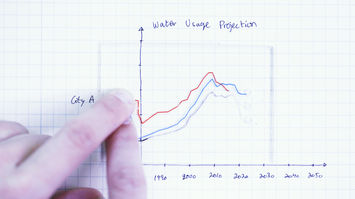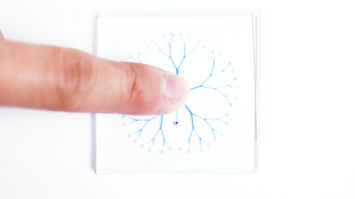
2020
Venous Materials
Interactive Micro-Fluidic Mechanisms
Hila Mor, Yu Tianyu, Ken Nakagaki, Benjamin Harvey Miller, Yichen Jia and Hiroshi Ishii
About
The Venous Materials project envisions a new way to design dynamic tangible interactions using fluidic structures. We are inspired by venous structures that are ubiquitous throughout nature and inside the human body. By changing colors, veins can inform us of internal and external physical conditions. For example, veins in leaves transmit pigments that drive color change, which informs us of the leaf’s internal condition as well as which season it is. And when we press firmly on a button, the tip of our finger changes its color—this subtle color change can be used as an indicator of the amount of applied pressure.
Similarly, the displayed flow pattern and color change of the fluidic channels within Venous Materials inform the users of the motion and physical force that’s applied on the material. The users can interact with Venous Materials by deforming or applying pressure on the material, which drives the fluid flow within the internal channels to visualize the dynamic responsive display. Therefore, Venous Materials simultaneously functions as a sensor and display of tangible information.
While computer chips and electronics usually require rigid and bulky components, Venous Materials is a soft and self-contained mechanism that utilizes the motion of daily activities as its energy source. Through research with microfluidics technology, we developed an approach for designing, simulating, and prototyping fluidic interactive sensors that can be embedded in, or attached to, any object.
We propose a wide spectrum of exciting potential applications by integrating Venous Materials in everyday scenarios. For example, embedding it in clothing can help visualize on-body motion, pressure, and balance, while attaching it to objects can enrich learning activities, augment dynamic graphics, and indicate conditions of package delivery content.
Venous Materials is a vision that puts forward a new paradigm in the field of human-computer interaction—the first step towards the integration of interactive fluidic mechanisms as tangible user interfaces. We hope our work will inspire researchers, designers, and artists by laying down a foundation for the growth of additional research within the realm of Venous Materials as interactive material design.
*This project was conducted at Tangible Media Group, MIT Media Lab -- led by Hila Mor. project page
Exhibitions
Publication
Gallery















